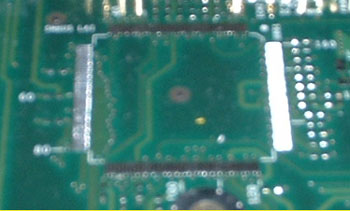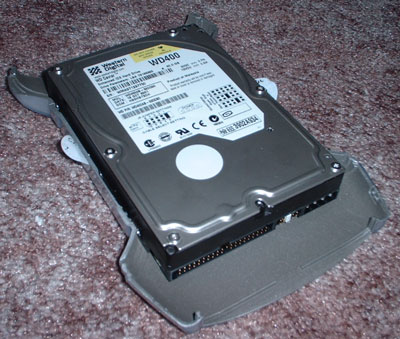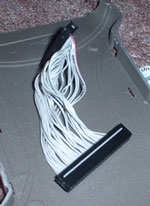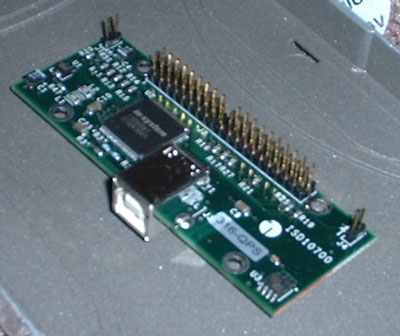|
Intel Desktop Board Examination
|
Posted: March 13th, 2002
Written by: Tuan Huynh
Features, USB 2.0
Intel boards often implement new features that Intel thinks will be the next big thing in integration. Today we’ll take a detailed look at various aspects of Intel boards, including performance, USB2, and Sound Max 3.0.
USB 2.0: The next big thing for peripherals?
Towards the middle of 2001, USB2 peripherals were finally appearing on the market. Shortly afterwards, motherboard manufacturers started implementing USB2 controllers onboard. This appeared to be the next big thing in main board integration since IDE RAID controllers. Intel, being one of the partners in USB 2.0 development, of course would jump on the bandwagon of offering integrated USB2 on their Desktop boards.
USB has been around for quite a while; it’s about time that the technology gets a refreshing update. First off, we’ll briefly go through the history of USB.
Approximately 7 years ago, companies started realizing that they needed to minimize the amount of ports that are the back of the PC, thus USB was born. USB was developed to replace the connectivity standard for printers, scanners, keyboards, mice, and various other peripherals with the ability to daisy chain them. USB featured a maximum bandwidth of 1.5Mbit for low speed devices such as mice and keyboards, and a maximum bandwidth of 12Mbit for high speed devices such as web cams, printers, scanners, and external CD-RW drives.
When USB was first finalized, it lay dormant; it wouldn’t be for a few years later till manufacturers and Microsoft were going to implement support for it. It wasn’t till Windows 95 OSR2 was released till we were able to see USB support in an OS, though the support negligible. When Windows 98 was released, it offered true USB Plug n Play capabilities for most USB peripherals. Shortly after Windows 98 was released, we saw a boom in USB peripherals hit the market.
With the everlasting fight for high-speed external devices such as hard drives and faster then 4x CD-RW drives, a new high-speed bus had to be developed. Of course there was IEE1394a, aka Firewire or iLink, but that was aimed more towards the Audio/Video enthusiast for Video Editing, thus external Firewire hard drives and burners never really penetrated the market too well.
In April 2000 at WinHEC, the specs for USB2 were published and it has taken approximately 2 years for USB2 to become adopted as a mainstream USB1.1 replacement. Nowadays main board manufacturers have gone about and integrated USB2 on boards. Most of the manufacturers have used NEC’s USB2 host controller while some of the late adopters of USB2 have started using the VIA VT6202 controllers. Today we’ll take a look at the USB2 that is optional on Intel Desktop boards designed for the P4.

Since Intel hasn’t released their new ICH with native USB2 support, they chose to use the most common USB2 controller made by NEC Technologies. The NEC USB2 controller has also found a home in various boards made by MSI and Asus. The NEC USB2.0 host controller can support up to five USB2 ports with backwards compatibility for USB1.1 devices.

As for boards the Intel boards that don’t have the USB 2.0 option installed, the place where the USB2.0 controller is silk screened.
USB 2.0 or Hi Speed USB is capable of providing a maximum throughput of 480Mbit/sec or 60MB/sec per channel, which means up to 5 USB ports, share the 480Mbit bandwidth. The amount of bandwidth each device recieves depends on the amount of simultaneous devices running. The speed increase from USB 1.1 will mean faster external devices. With USB1.1, CD-RW drivers were limited to about a 4x writing speed while USB HD’s were extremely slow. With the recent introduction of USB 2.0, we’ve seen high speed CD-RW drives that write up to 40x and hard drives that are capable of performing on par with an internal IDE hard drive. How fast exactly are USB 2.0 devices? Today we’ll use the QPS 40GB External USB2 hard drive to demonstrate USB2 device hard drive performance.
 
The QPS M3 series of external hard drives is based around tasteful graphite and white color rounded enclosure. The size of the drive is a little bigger then the drive itself and also comes with its own carrying case. The front panel of the drive has two LED’s, a red and a green one for power and a busy light. On the backside of the drive lie the power button, USB connector, and proprietary power connector.

With a flat head screw driver and a little prying, I was able to open up the enclosure. To my surprise there was a Western Digital WD400 40GB 5400RPM HD. The drive has an average seek time of 9.5ms, a 2MB buffer, and ATA100 support.

The cable used in the enclosure seems to be a standard 40 conductor cable capable of up to ATA33 transfer rates. This could pose to be a limitation for transfer rates; we’ll look more into this later. The cable is spliced individually so it can be twisted easily.

Going from IDE to USB will require some sort of middle interface device, for USB to IDE connectivity, the QPS M3 uses a simple circuit board with a USB to IDE controller produced by In System.
Next Page
|
|